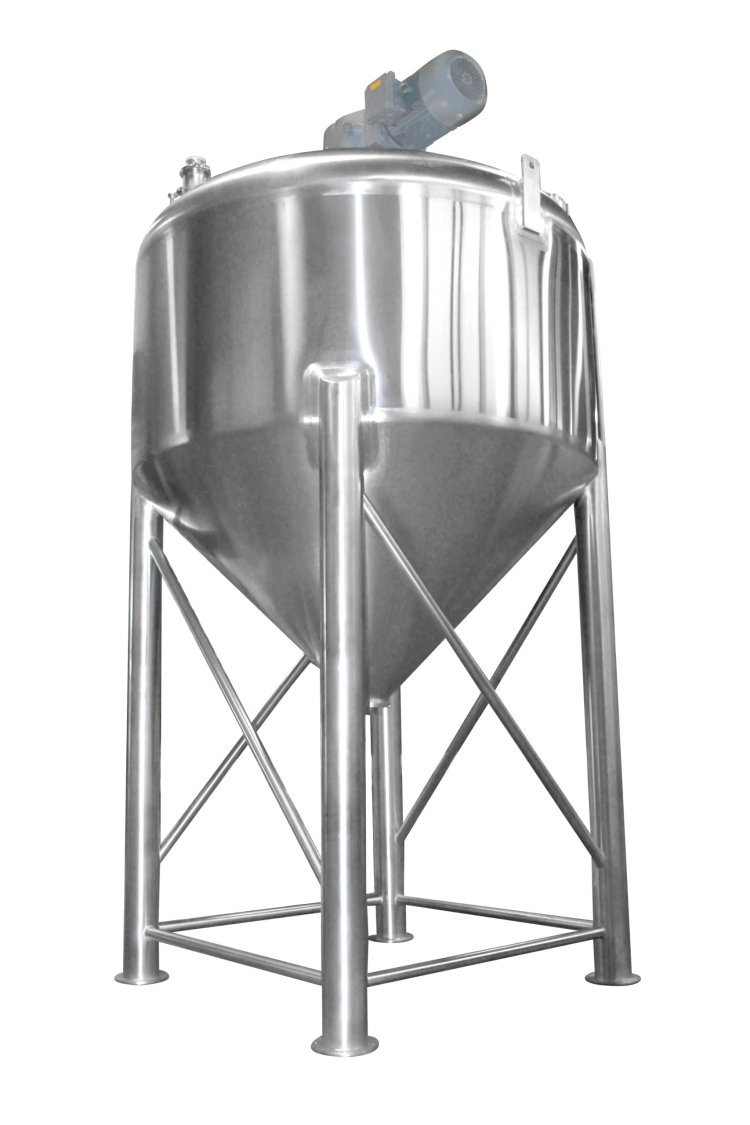The Advantages of Pressurized Mixing Tanks in Chemical Processing

In the chemical processing industry, efficiency, precision, and safety are critical factors. Among the many types of equipment used in manufacturing, pressurized mixing tanks play a vital role in ensuring consistent and high-quality product formulations. These tanks help achieve superior mixing performance while maintaining controlled conditions for chemical reactions.
In this article, we will explore the key advantages of pressurized mixing tanks in chemical processing, including their impact on product quality, efficiency, safety, and cost-effectiveness.
1. Enhanced Mixing Efficiency
One of the primary benefits of using a pressurized mixing tank is its ability to achieve faster and more uniform mixing. In conventional tanks, mixing relies heavily on mechanical agitation and gravity. However, in pressurized mixing tanks, additional force from compressed gases or external pressure improves the dispersion of chemicals.
- Better Homogeneity: The pressurized environment ensures that all components mix evenly, reducing inconsistencies in chemical formulations.
- Faster Mixing Time: Increased pressure accelerates molecular interactions, reducing the time required for thorough blending.
- Higher Solubility: Gases or substances that require high-pressure conditions for solubility, such as carbon dioxide or oxygen, dissolve more effectively under pressurized conditions.
2. Improved Reaction Control
Many chemical processes involve reactions that require precise conditions to produce desired results. Pressurized mixing tanks offer better control over variables like temperature, pressure, and mixing intensity, which can directly influence reaction rates and product quality.
- Controlled Temperature Management: The pressurized environment prevents heat loss and allows for better thermal regulation. This is especially important for exothermic and endothermic reactions.
- Minimized Contamination: Since the tank is sealed, there is a reduced risk of contaminants entering the mixture, ensuring product purity.
- Optimized Chemical Kinetics: Many reactions occur more efficiently at controlled pressures, leading to better yields and lower waste generation.
3. Increased Safety and Reduced Risk
Handling volatile chemicals or sensitive reactions in an open mixing tank can pose significant safety hazards. Pressurized mixing tanks provide a safer alternative by maintaining a sealed and controlled environment.
- Prevention of Hazardous Leaks: The enclosed design minimizes the chances of harmful vapors or chemicals escaping into the work environment.
- Explosion and Fire Risk Reduction: In industries dealing with flammable substances, pressurized tanks help regulate oxygen levels, reducing the risk of explosions.
- Elimination of Operator Exposure: The use of automated systems in pressurized mixing tanks minimizes direct human contact with dangerous substances.
4. Higher Production Yield and Cost Efficiency
For chemical manufacturers, optimizing production yield while keeping costs low is a priority. Pressurized mixing tanks enhance production efficiency, leading to higher output and reduced material waste.
- Less Raw Material Loss: The enclosed environment reduces evaporation and prevents chemical degradation.
- Energy Efficiency: Pressurized systems often require less mechanical agitation, cutting down on energy consumption.
- Lower Operational Costs: Improved reaction rates and enhanced mixing reduce the need for additional processing steps, saving time and resources.
5. Versatility Across Chemical Processing Applications
Pressurized mixing tanks are widely used across various chemical industries, including pharmaceuticals, petrochemicals, food processing, and biotechnology. Their ability to adapt to different materials and processes makes them highly versatile.
- Pharmaceuticals: Ensures precise formulation of drugs while maintaining sterility.
- Petrochemicals: Enhances the mixing of fuels, lubricants, and other petroleum-based products.
- Food and Beverage: Facilitates carbonation and emulsification processes.
- Biotechnology: Supports fermentation and bio-reactive processes under controlled conditions.
6. Long-Term Durability and Reliability
Pressurized mixing tanks are often built with high-quality materials such as stainless steel or reinforced alloys, making them highly durable and resistant to corrosion.
- Extended Equipment Lifespan: Properly maintained pressurized tanks can last for decades.
- Resistance to Harsh Chemicals: These tanks can handle strong acids, bases, and solvents without degradation.
- Minimal Maintenance Requirements: Sealed systems require fewer repairs, reducing downtime.
Final Thoughts
Pressurized mixing tanks play an essential role in enhancing efficiency, safety, and product quality in chemical processing. Their ability to provide better mixing, reaction control, and cost savings makes them a valuable investment for any industrial operation. Whether in pharmaceuticals, petrochemicals, or biotechnology, pressurized mixing tanks offer a superior alternative to conventional mixing systems.
By integrating pressurized mixing technology, companies can improve product consistency, optimize chemical reactions, and ensure a safer work environment—ultimately leading to greater productivity and profitability.
What's Your Reaction?



















.jpg)
